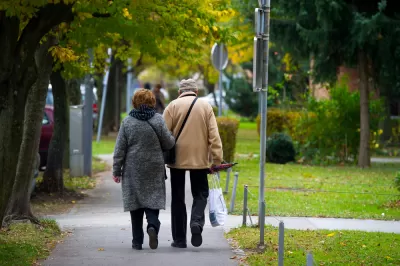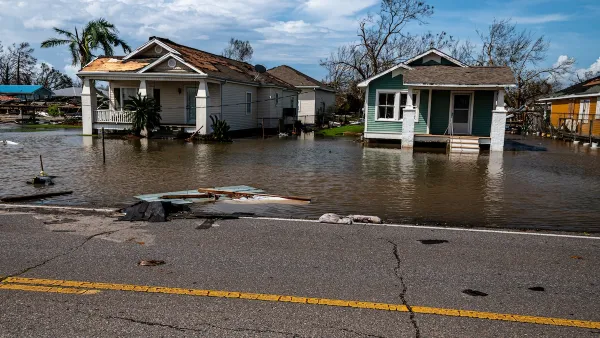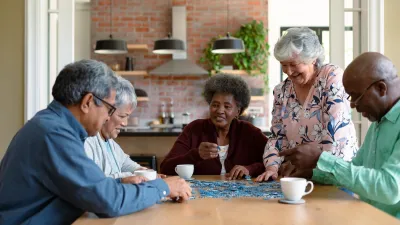Demographic change means older city dwellers. Entrepreneurs and developers are searching for better ways to serve this community.

As people live longer, cities must accommodate the needs of the elderly. In a recent article for The Guardian, Matthew Wheeland investigates what that means. For a start, the way retired people live gives them different challenges. People who don't work and don't commute use the city's infrastructure in different ways. Older residents can also find cities isolating, "A study of over-60s by the University of California, San Francisco found 43% of those surveyed felt lonely on a regular basis," Wheeland Reports. "Exacerbating the problem is that as people age they are less likely to move, "… only 4% of older people moved in the past year, compared to 13% of under-65s," Wheeland writes.
Some entrepreneurs and developers have seen opportunities in tackling these problems. The online service Silver Nest connects empty-nesters and other baby boomers with housemates who are looking to save money and avoid living alone. The developer of Serenbe in the Atlanta area is looking to build an apartment to connect people of different ages. "The aim of Serenbe is to tackle the social isolation people can experience as they age, either because they live in cities that are failing to meet the needs of older people, or because the retirement homes or communities they move into can leave them feeling cut off," Wheeland reports.
FULL STORY: What would it take to make an age-friendly city?

Planetizen Federal Action Tracker
A weekly monitor of how Trump’s orders and actions are impacting planners and planning in America.

Vehicle-related Deaths Drop 29% in Richmond, VA
The seventh year of the city's Vision Zero strategy also cut the number of people killed in alcohol-related crashes by half.

As Trump Phases Out FEMA, Is It Time to Flee the Floodplains?
With less federal funding available for disaster relief efforts, the need to relocate at-risk communities is more urgent than ever.

Berkeley Approves ‘Middle Housing’ Ordinance
The city that invented single-family zoning is finally reckoning with its history of exclusion.

SEPTA Budget Slashes Service by 45 Percent
The Philadelphia-area transit agency is legally tasked with maintaining a balanced budget. Officials hope the state will come to the rescue with additional funding.

Connecticut Governor Vetoes Housing Bill
Gov. Lamont reversed his view on a controversial affordable housing bill that would have required municipalities to zone for set amounts of affordable housing to receive state funding.
Urban Design for Planners 1: Software Tools
This six-course series explores essential urban design concepts using open source software and equips planners with the tools they need to participate fully in the urban design process.
Planning for Universal Design
Learn the tools for implementing Universal Design in planning regulations.
Heyer Gruel & Associates PA
JM Goldson LLC
Custer County Colorado
City of Camden Redevelopment Agency
City of Astoria
Transportation Research & Education Center (TREC) at Portland State University
Camden Redevelopment Agency
City of Claremont
Municipality of Princeton (NJ)





























